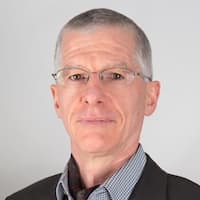ABSTRACT
The COVID-19 pandemic renewed worldwide interest in pathogen propagation, transmission and mitigation. In particular, the relative impact of transmission via large droplets' versussmall droplets' or aerosols, as well as possible changes to existing heating, ventilation air-conditioning (HVAC) systems has been debated thoroughly since 2020. This in turn has led to a vigorous effort to model all of the phenomena associated with pathogen propagation, transmission and mitigation via advanced computational techniques – from the molecular scale to the scale of the built environment.
In order to derive the required physical and numerical models, the talk will start by summarizing the current understanding of pathogen (and in particular virus) transmission and mitigation. The ordinary and partial differential equations that describe the flow, the particles and possibly the UV radiation loads in rooms or HVAC ducts will be presented, as well as proper numerical methods to solve them in an expedient way. Thereafter, the motion of pedestrians, as well as proper ways to couple computational fluid dynamics (CFD) and computational crowd dynamics (CCD) to enable high-fidelity pathogen transmission and infection simulations is treated.
Numerous examples (classrooms, offices, hospitals, subway cars, airplanes) of studies carried out over the last year indicate that high-fidelity simulations of pathogen propagation, transmission and mitigation in the built environment have reached a high degree of sophistication, offering a quantum leap in accuracy from simpler probabilistic models. This is particularly the case when considering the propagation of pathogens via aerosols in the presence of moving pedestrians.
This talk is part of the 5th International Symposium of CIMNE Labs.
SPEAKER CV
 Prof. Rainald Lohner is the head of the Center for Computational Fluid Dynamics of George Mason University in Fairfax, VA. His areas of interest include numerical methods, solvers, grid generation, parallel computing, visualization, pre-processing, fluid-structure-thermal interaction, shape and process optimization, digital twins, structural monitoring techniques, and computational crowd dynamics. His codes and methods have been applied in many fields, including aerodynamics of airplanes, cars and trains, hydrodynamics of ships, submarines and UAVs, shock-structure interaction, dispersion analysis in urban areas, haemodynamics of vascular diseases and pedestrian safety assessments. He is the author of more than 900 articles covering the fields enumerated above, as well as a textbook on Applied CFD Techniques.
Prof. Rainald Lohner is the head of the Center for Computational Fluid Dynamics of George Mason University in Fairfax, VA. His areas of interest include numerical methods, solvers, grid generation, parallel computing, visualization, pre-processing, fluid-structure-thermal interaction, shape and process optimization, digital twins, structural monitoring techniques, and computational crowd dynamics. His codes and methods have been applied in many fields, including aerodynamics of airplanes, cars and trains, hydrodynamics of ships, submarines and UAVs, shock-structure interaction, dispersion analysis in urban areas, haemodynamics of vascular diseases and pedestrian safety assessments. He is the author of more than 900 articles covering the fields enumerated above, as well as a textbook on Applied CFD Techniques.





